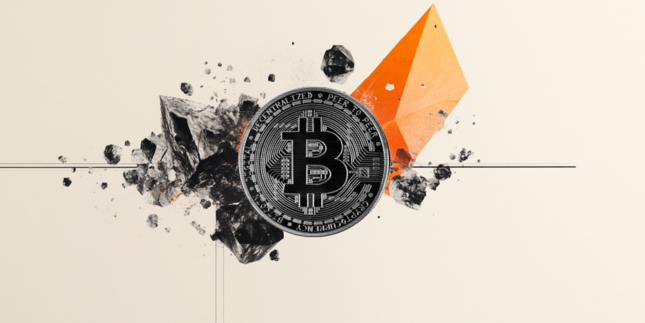With the average transaction fee on the Ethereum blockchain hitting almost $40 on February 23, it's pretty clear that there's a problem to be addressed. It's one thing for a DeFi investor chasing a high yield on a lending protocol or a whale moving around large amounts of ETH. But what about regular people trying to move smaller amounts, transact in ERC20 tokens like stablecoins, ERC721 tokens like NFTs, or dApp developers trying to onboard new users? With fees like that, they're simply being priced out of the equation.
Blockchain games make no sense with such lengthy processing times and other blockchain applications become unnecessarily expensive to use. It's true that the average transaction fee has come down a fair bit since its February highs, currently at around $19, but still, payment providers like PayPal are providing better rates in some cases – hardly the promise of crypto. Moreover, gas fees have decreased in tandem with ether price. As soon as it gets ready for another upward rally, the cost of interacting with the Ethereum network will soar along with it.
How is Ethereum tackling the issue?
Even before the rush on collectible cat game CryptoKitties clogged the Ethereum network in 2017, its scaling limitations were well-understood. In 2014, several scaling solutions had already been brought up from ZK-SNARKS (now called roll ups) to 'shadow chains,' and plasma in 2015. Yet, the most sustainable solution to Ethereum's pressing issues lies in its transition to a Proof of Stake (PoS) blockchain that will use sharding to break down large amounts of data into smaller pieces (ETH 2.0). That's still some ways off.
Until then, Ethereum is working on improvements. Co-founder Vitalik Buterin has openly committed to resolving Ethereum's scaling issues as quickly as possible by using the layer 2 solution optimistic roll ups. Speaking on the Tim Ferris podcast earlier this month, he enthused that roll ups would allow Ethereum to scale by a factor of 100.
"If you have rollups, but you do not have sharding, you still have 100X factor scaling," he said. "You still have the ability for the blockchain to go up to somewhere between 1,000 and 4,000 transactions a second, depending on how complex these transactions are." No date for roll ups has been cemented yet but it's likely to be the dominant topic of conversation for Ethereum scaling in the mid-term.
In fact, with the upcoming launch of this Layer 2 solution by Optimism slated for this month, many large DeFi players have decided to integrate it in their protocols, including Uniswap, and Synthetix. This could make the biggest dent yet into Ethereum's network congestion and high fees.
The upcoming Berlin upgrade on April 14 could also have some effect on the reduction of gas fees. Network congestion may not be immediately relieved, though; Ethereum has some major structural changes to undergo before it can solve its problems.
The solutions in question may be enough to patch Ethereum and the thousands of dApps built on it through to ETH 2.0. But, they may not. After all, Ethereum doesn't operate in a vacuum. There is plenty of competition heating up, starting to propose real functioning alternatives to Ethereum. Even with the largest developer community in the space and the most dApps; complacency can be a killer.
More efficient versions of stablecoins
We're already seeing fast, robust, and stable open-source Proof of Stake blockchains like Algorand and Tron providing traders with the chance to transact with stablecoins like USDT and USDC on their networks. By running the Algorand versions (USDCa and USDTa) of either of these two stablecoins instead of their ERC20 versions, for example, users, especially high-frequency traders looking to avoid the volatility of cryptocurrencies like ether and bitcoin, can save a lot of time and money.
Algorand can process 1,000 transactions per second (TPS) allowing for much-needed speed and throughput compared to Ethereum's current 15 TPS. Fees are also next-to-nothing at around $0.001/transaction — regardless of the size. And, beyond this massive benefit for stablecoin traders, developers wanting to use the Algorand Standard Asset (ASA) protocol can create new tokens to use inside their dApp running on a faster network.
Of course, blockchains like Algorand may not have the same network effect as Ethereum, but if solutions don't come quickly, it's not out of the question that migrations of dApps from Ethereum begin to become more common.
EVM-Compatibility
Ethereum is also facing more serious competition from other players in the blockchain space. Binance Smart Chain (BSC), for example, has started to make a dent, even head-on challenging Ethereum with one popular dApp in particular, Venus (XVS). However, not all developers will want to accept the trade-off that building on BSC involves. Binance Smart Chain still relies on many centralized elements in order to offer low-cost transactions.
OKExChain, in contrast, has been designed with decentralization at its core. As a fully open-source public chain with a focus on trading above all, it also offers extremely high throughput and, upon completion of its phased rollout, EVM-compatibility as well.
This will be extremely attractive especially to decentralized financial applications and DEXs that can join the world's first trading-centric public chain and migrate their dApps from Ethereum to trade, transact, and develop at a fraction of the cost.
Blockchains with EVM-compatibility, especially ones with a high focus on decentralization, will challenge Ethereum's dominance and offer developers, traders, and all network users more choice. They will also force the incumbents to solve their scaling issues and offer users the experience they deserve – which is a net positive for all participants in the space.
This material should not be taken as the basis for making investment decisions, nor be construed as a recommendation to engage in investment transactions. Trading digital assets involves significant risk and can result in the loss of your invested capital. You should ensure that you fully understand the risk involved and take into consideration your level of experience, investment objectives and seek independent financial advice if necessary.
Recommended Content
Editors’ Picks

Bitcoin to extend its consolidation between the $75,000 to $88,000 range
Bitcoin price faces a slight rejection around the $85,000 resistance level on Wednesday after recovering 3.16% the previous day. A K33 report highlights that Cryptocurrencies and Equities have largely de-risked going into Donald Trump’s “Liberation Day” on Wednesday.

Maker, Gala and Polygon lead $100k whale transactions, can altcoins defy looming macro uncertainty?
Maker (MKR), GALA, and Polygon (POL) are among the crypto projects that have seen a spike in whale transactions of at least $100,000 in the past week, as revealed by Santiment on-chain data.

Cardano and Binance Coin Price Forecast: Altcoins ADA and BNB show weakness in momentum indicators
Cardano (ADA) and Binance Coin (BNB) prices edge slightly down, trading around $0.66 and $598, respectively, at the time of writing on Wednesday after a mild recovery so far this week.

Public firms turn balance sheets into Bitcoin vaults: Gamestop raises $1.5 billion; Metaplanet adds 160 BTC
Public companies are increasingly converting their balance sheets into Bitcoin reserves. Gamestop (GME) has raised $1.5 billion in capital, with potential plans to allocate part of the funds toward expanding its Bitcoin treasury.

Bitcoin: BTC remains calm before a storm
Bitcoin's price has been consolidating between $85,000 and $88,000 this week. A K33 report explains how the markets are relatively calm and shaping up for volatility as traders absorb the tariff announcements. PlanB’s S2F model shows that Bitcoin looks extremely undervalued compared to Gold and the housing market.

The Best brokers to trade EUR/USD
SPONSORED Discover the top brokers for trading EUR/USD in 2025. Our list features brokers with competitive spreads, fast execution, and powerful platforms. Whether you're a beginner or an expert, find the right partner to navigate the dynamic Forex market.